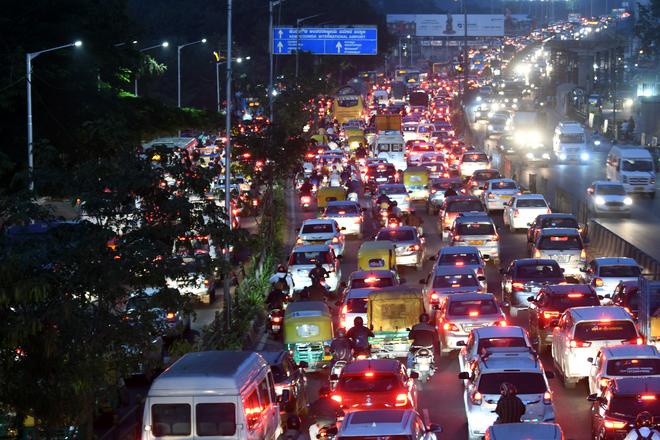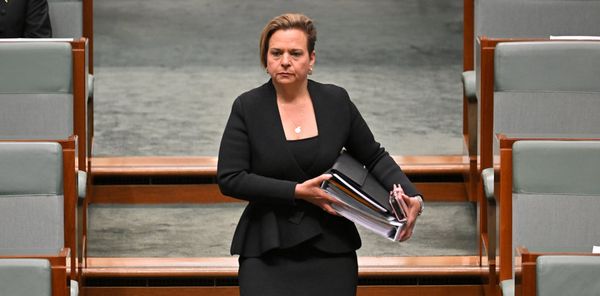A brand new year is upon us, and yet, Bengaluru’s mobility agenda remains chaotic and clueless as ever. Is there a way to make sense of the mishmash of roads, incomplete flyovers, skeletal Metro pillars, slow-paced suburban rail work and grand tunnel visions? Can a workable, sustainable, well thought-out mobility plan take shape, freeing Bengalureans from this vicious cycle of despair?
Also Read | Bengaluru’s Chitra Santhe: 1,500+ artists showcasing art on Jan 7
This is possible, but only if the foundation, a strong institutional mechanism called the Bengaluru Metropolitan Transport Authority (BMLTA) is allowed to emerge as a strong regulatory body. Independent mobility consultant Satya Arikutharam notes that the state government has failed to constitute the body even a year after the BMLTA bill was passed.
Constitute, activate BMLTA
The law itself, he reminds, clearly states that the Authority should be in place within six months of passage of the bill. “The BMLTA has to be professionally run, and be proactive. It should put together a comprehensive mobility plan (CMP), with accountability from all the delivery agencies including the Bengaluru Metropolitan Transport Corporation (BMTC), Bangalore Development Authority (BDA) and the Bruhat Bengaluru Mahanagara Palike (BBMP),” he elaborates.
The lack of a master plan and a CMP has already left the city in a mammoth mess. A course correction could be attempted this year. Satya cites the Shivaram Karanth Layout, with about 34,000 sites to be sold over the next six months to a year. “What about the transport requirements of the layout? Nobody has a plan.”
A fully functional BMLTA could direct the BMTC to analyse the mobility demands of the new layout, prepare a plan to acquire and deliver the required buses. “The transport corporation can do some financial planning and get the buses. BMTC is perennially trying to catch up with its finances.”
Temporary, ad-hoc transport interventions and costly retrofits have left the city in deep chaos. Planning ahead is the key. As Satya puts it, “The sites will not transform into houses overnight, it could take four to five years. That is the lead time to plan bus stops and ensure that people heading to and from the layout always use public and not private transport. So land use and transport planning should be the first priority of BMLTA.”

BMTC, BMRCL should complement
Speeding up work on the suburban rail corridors is another big ask. Here too, the BMLTA will have a monitoring task, ensuring that the lines are well integrated with the BMTC and Metro. But this can happen only if the two agencies do not look at each other as competitors. Satya says: “They should instead be complementing each other to increase the pie of the public transport mode share. If the BMLTA comes in as a regulator, it has the statutory backing to ensure some sort of integration.”
The Mass Rapid Transit Systems (MRTS) of the Metro and suburban rail should be the top priority for 2024, emphasizes Dr. Ashish Verma, Convenor of the Sustainable Transportation Lab at the Indian Institute of Science (IISc). “It should remain the priority not just in 2024 but for years to come. Rest all will fall into place in the city. And zero priority to tunnel roads, although politically they are still pitching for this project,” he points out.
Chaos at mall
Unplanned or poorly planned projects are a recipe for chaos and disaster. The recent chaos at the new Mall of Asia off Airport Road is a classic example. He explains, “The traffic chaos and impact have made the lives of people in the area hell. I was clear that this will happen once the mall opens. It is the result of a lack of planning and a deep nexus between the builders and government agencies. The nexus allows this to happen in spite of knowing the consequences.”
Since parking at the mall has proven to be grossly under capacity, mall visitors were allowed to park in the roads outside. This, done in collusion with the traffic police, inevitably led to traffic diversion, congestion and extreme chaos. Ambulances and other emergency vehicles were stuck. “Now it is too late, you can only do some course corrections. It is better to prevent this before all these happen. The tunnel road is one such project and people should wake up,” warns Dr. Ashish.
For years, the city’s crying need for safe, walkable footpaths and cycling paths has been left largely unaddressed. The Smart City roads, modelled after the TenderSURE roads with a pedestrian-first approach, have diluted the walkability standards. On many newer Smart City roads, space for footpaths has been narrowed down so much that pedestrians are forced to walk on the motorways, jeopardizing their safety. So, will 2024 be any different?
Build walking, cycling infra
Dr. Ashish says a fresh start could be made once a dense MRTS network comes into place. “Then, the immediate focus should be on building an excellent walking and cycling infrastructure in the influence area of each of these MRTS stations. This will feed and support the MRTS system, reducing the burden on other modes to ensure first and last mile connectivity. This should be a parallel planning process, as you develop a MRTS network. Only this can save the city,” he says.
Seeking BMTC feeder service buses at every Metro station, rail mobility activist Rajkumar Dugar from Citizens for Citizens puts a condition: “These services should be available on both sides of the Metro corridor. This will ensure that 40% of the city gets immediate multi-modal public transport. The same thing should be applied to suburban rail stations as and when they come up.”
Four, not two tracks
Plans are now afoot to build a Ring Rail network around the city. A pre-feasibility study is now in progress with the Railways focusing on the Devanahalli – Doddaballapur stretch. Rajkumar suggests that the ring rail should have four, not two tracks.
The message is clear: Have a long-term perspective. As he notes, “Due to the rising travel demands, they are quadrupling tracks across the city. When you are planning a new network, it is better to have more tracks. Ten years later, you will not get land and cost will go up 20 times. And also, build a station every four-five kilometer on average to help local commute.”







